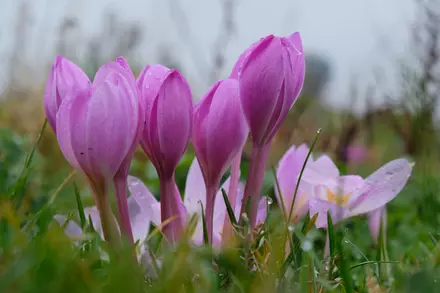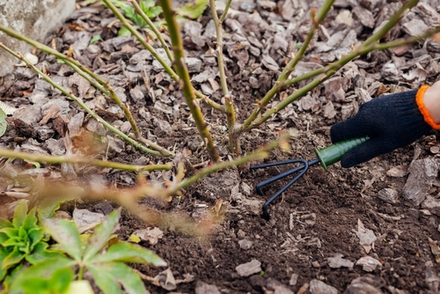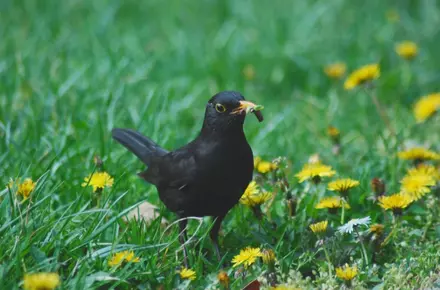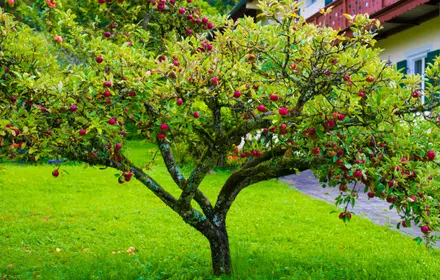Autumn is the Time to Plant Spring Bulbs

The time to plant spring bulbs starts right now. There isn't much that beats the excitement of planting spring bulbs out in the garden and then seeing them emerge from the soil in springtime, ready to burst into colourful bloom just at the time of year when we need it the most. There are many to choose from with various shapes, colours, heights and textures, so there are definitely spring bulbs for every garden. They can be planted into the ground or in containers, so this is a guide to help you decide.
Plan what you want to grow
It is all in the planning. Firstly think about what type of bulbs you would like to grow and where you want them planted. Either cast your eye over your garden and be sure you know where they will go, or draw a plan on a piece of paper. Prepare your soil. Ensure it is well-drained and has some well-rotted organic matter incorporated before planting. If you are planting in containers, fill them with good quality peat-free compost.
Knowing the different types of bulbs
Before you plant, know what type of bulb you are growing. There are wide varieties of Daffodils, Tulips, colourful and fragrant Hyacinths, Alliums, Crocus and more. Each will be of different sizes and must be planted at different depths depending on the type. Larger bulbs can be planted lower than smaller bulbs. Please read more about spring-flowering bulbs in our other blogs.
When to plant spring bulbs
All spring bulbs can be planted from early autumn onwards, so you have plenty of time. Tulips, however, can be grown all the way up to Christmas and are best left to October and November. Others ideally should be planted in September and October. Try not to plant out if the ground is very wet or frozen. If you don't have enough time and plant later in the year, we recommend planting them no matter what!
How to plant spring bulbs
Decide on where you're going to plant your bulbs. Pick a site that's large enough for your spring bulb. Snowdrops need smaller holes than Allium bulbs.
- Plant the bulb two to three times the depth of the bulb by making a hole big enough for the bulb (use a trowel or a bulb planted, even a dibber for smaller bulbs) with the pointed end facing upwards.
- There is generally no need to water, especially if the soil is already moist, and they can be left to the elements over the winter.
- If you are planting in containers, they shouldn't be left to dry out over long periods.
Ten spring-flowering bulbs
-
Daffodils (Narcissus) are one of the most popular and easy-to-grow spring bulbs, and there's an incredible variety of different flowers to suit all tastes. Depending on the type you choose, you can have flowers any time from late winter (Narcissus' January Gold') to late spring (Narcissus pseudonarcissus – the daffodil that inspired Wordsworth!) Daffodils do best in full sun and well-drained soil.
-
Tulips are a splash of vibrant colour in spring. Ranging from dwarf Tulip' Little Beauty' to statuesque Tulip' Queen of Night', there are tulips to suit all garden sizes, and they're great for pots too. Tulips are very easy to grow, preferring a sunny spot and well-drained soil.
-
Crocuses are one of the first signs of spring, cheering up cold grey days with their small goblet-shaped flowers in bright colours. They're ideal for pots and also look lovely naturalised on a lawn. Crocuses love the sun and well-drained soil.
-
Iris reticulata are the earliest irises to flower, blooming in late winter and early spring. Their elegant flowers look stunning, combined with early daffodils in pots. Look for Iris' Harmony, with its deep blue flowers, or rich purple Iris' Pauline'. Iris reticulata bulbs do best in well-drained soil in full sun.
-
Snake-head fritillaries (Fritillaria meleagris) are suitable for damp soils and will grow happily in light shade. With their striking white or maroon nodding flowers and snakeskin marbling, these elegant spring bulbs look fantastic planted in large groups or on naturalised lawns.
-
Camassia is another good choice for damp soils. Planted in large groups, their tall spires of flowers look like blue mist in spring.
-
English bluebells (Hyacinthoides non-scripta) are woodland plants and grow well in dappled shade. Plant them in large swathes for a sea of blue flowers in mid-spring.
-
Snowdrops (Galanthus nivalis) flower in late winter, a welcome sign that spring is on its way. These delicate white nodding flowers with green markings are happy growing under deciduous trees or shrubs where they will get sun in early spring before the leaves appear.
-
Hyacinths (Hyacinthus orientalis) are loved for their beautiful fragrance and come in a wide range of gorgeous colours, like the bright pink flowers of Hyacinth' Jan Bos' or beautiful soft yellow Hyacinth 'City of Haarlem'. They look superb in pots near the house or planted along the edge of a path so you can appreciate the fragrance as you pass.
-
Winter aconites (Eranthis hyemalis) produce carpets of gold in late winter with their bright yellow buttercup flowers. They're ideal for planting around deciduous trees and shrubs to bring colour to a shady spot.
Pick from our selection of spring bulbs and tools in store to create your spring garden.



